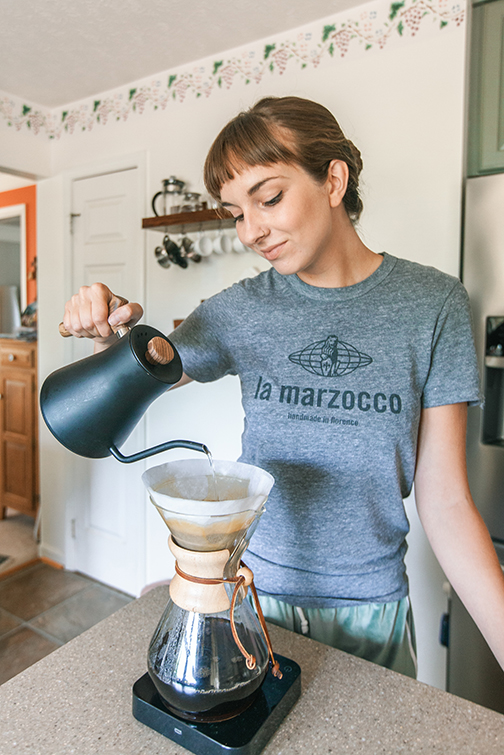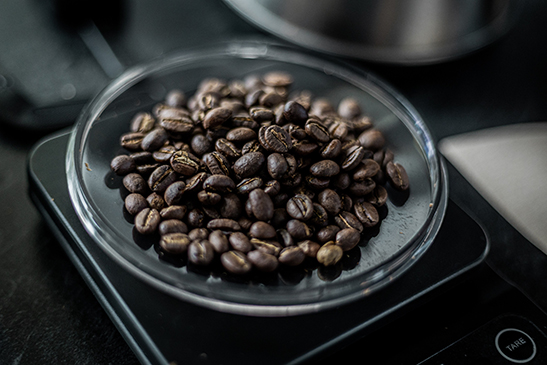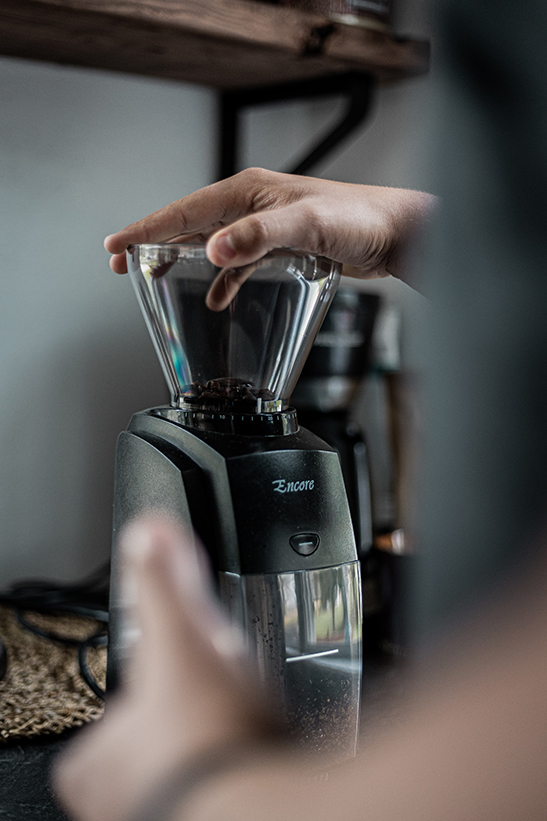Coffee brewing is more than just a morning ritual or a means to an energy boost. It’s a gateway to a world of flavors, aromas, and experiences. From the humble Arabica and Robusta beans to the intricate brewing methods, each step in the coffee brewing process contributes to the final cup’s taste and quality.
In this article about advanced coffee brewing, we will look at the key variables that need mastering for the perfect cup of coffee.

The Art and Science of Advanced Coffee Brewing
Advanced coffee brewing is where art meets science. It’s a delicate dance of extracting the right flavors, aromas, and textures from the coffee beans. This process requires a deep understanding of the coffee’s origin, the roast level, and the brewing method.
The art of coffee brewing lies in the barista’s skill and intuition. It’s about understanding the subtle nuances of different coffee beans, adjusting the grind size to match the brewing method, and pouring water with precision and consistency.
The science of coffee brewing, on the other hand, is about understanding the chemistry behind coffee extraction. It’s about knowing how water temperature affects extraction, how the grind size influences the brew time, and how the brew ratio determines the coffee’s strength and flavor.
Mastering Variables in Coffee Brewing: The Key to the Perfect Cup
Mastering the variables in coffee brewing is crucial to achieving the perfect cup of coffee. The five key variables include the coffee-to-water ratio, water temperature, brew time, and grind size.
- The coffee-to-water ratio determines the strength and flavor of your coffee. A higher ratio produces a stronger, more flavorful cup, while a lower ratio produces a weaker, less flavorful brew.
- Water temperature plays a crucial role in coffee extraction. Too hot, and you risk over-extraction, leading to a bitter taste. If it is too cold, you risk under-extraction, resulting in a weak, sour brew.
- Brew time is another critical variable. The longer the brew time, the more flavors and compounds are extracted from the coffee grounds. However, over-brewing can lead to over-extraction, while under-brewing can lead to under-extraction.
- The grind size affects the extraction rate and brew time. A finer grind exposes more surface area to the water, leading to faster extraction, while a coarser grind exposes less surface area, resulting in slower extraction.
Mastering these variables is a challenging task. It requires practice, experimentation, and a deep understanding of coffee brewing. But once you’ve learned them, you can brew a coffee perfectly tailored to your taste buds.
Understanding Coffee Beans and Their Impact on Flavor
The journey to the ideal cup of coffee begins with understanding the coffee beans themselves. Coffee beans are the seeds from a coffee plant, and their characteristics significantly impact the flavor of your brew.
There are two key types of coffee beans: These are Arabica and Robusta.

- Arabica beans are well known for their smooth, mild flavor and lower caffeine content.
- Robusta beans have a stronger, more bitter taste and higher caffeine content.
The origin of the coffee beans also plays a crucial role in their flavor profile. Beans from different regions have distinct flavors, aromas, and acidity levels. For example:
- African beans are often fruity and wine-like
- South American beans tend to be nutty and sweet
Lastly, the roast level of the coffee beans affects their taste.
- Light roasts preserve the original flavors of the beans.
- Medium roasts balance acidity and body.
- Dark roasts bring out the oils and create a bold, robust flavor.
Brew Ratio: The Key to Balanced Coffee
The brew ratio, or the amount of coffee to water, is critical in coffee brewing. It determines both the strength and flavor of your coffee.
A standard brew ratio is 1:15, meaning one part coffee to fifteen parts water. However, this ratio can be adjusted to suit personal tastes. A higher ratio (like 1:12) will result in a stronger, more flavorful cup, while a lower ratio (like 1:18) will produce a milder, less intense brew.
It’s essential to measure both the coffee and water by weight, not volume, for accuracy. A digital scale can be a valuable tool for this.
Water Temperature: The Unsung Hero of Coffee Brewing
Water temperature is often overlooked in coffee brewing, but it plays a vital role in extraction. The National Coffee Association says the perfect water temperature for brewing is 195 to 205 degrees Fahrenheit.
- Water that’s too hot can over-extract the coffee, leading to a bitter taste.
- Water that’s too cool can under-extract the coffee, resulting in a weak, sour brew.
An excellent way to ensure the proper water temperature is to use a kettle with a built-in thermometer or an electric kettle with temperature control.
Brewing Time: The Fine Line Between Under-Extraction and Over-Extraction
Brewing time is the amount of time the water contacts with the coffee grounds. It’s a delicate balance: too short, and you risk under-extraction; too long, and over-extraction.
Under-extracted coffee can taste sour, acidic, and underdeveloped. Over-extracted coffee, on the other hand, can taste bitter, hollow, and overly strong.
The ideal brew time varies depending on the brewing method. For example, a French press should be brewed for 4 to 5 minutes, while an espresso shot should be pulled in 20 to 30 seconds.
The Role of Grinding in Coffee Brewing
The grind size of your beans is another crucial variable in coffee brewing. It affects the surface area exposed to the water, influencing the extraction rate and brew time.
- A finer grind exposes more surface area to the water, leading to faster extraction. It is ideal for brewing methods with short brew times, like espresso.
- A coarser grind exposes less surface area, resulting in slower extraction. It is suitable for brewing methods with longer brew times, like French press or cold brew.
Consistency in grind size is also essential. An uneven grind can lead to over and under-extraction in the same brew, resulting in a muddled flavor profile.
A quality burr grinder can help achieve a consistent grind.

The Impact of Brewing Methods on Coffee Taste
Different brewing methods can significantly impact the taste of your coffee. Each method has unique characteristics and can highlight various aspects of the coffee’s flavor profile.
- Pour-over methods, like the Chemex or V60, produce a clean, vibrant brew highlighting the coffee’s acidity and aroma.
- The French press creates a rich, full-bodied brew with much texture and depth.
- Espresso machines extract coffee under high pressure, resulting in a concentrated, intense shot with a layer of crema on top.
- Cold brew methods steep coffee grounds in cold water for an long period, resulting in a smooth, low-acidity brew perfect for hot weather.
Choosing the correct brewing method depends on your taste preferences, the type of coffee beans you use, and the available equipment. Experimenting with different methods can be a fun and rewarding way to explore the world of coffee.
By understanding and mastering these variables, you can take control of your coffee brewing process and create a cup perfectly tailored to your taste. It’s all about finding the right balance between the different elements and adjusting them to achieve your ideal brew.
Conclusion: The Journey to the Perfect Cup of Coffee
Mastering the art of coffee brewing is a journey, not a destination. It’s about exploring, experimenting, and learning along the way. It’s about understanding the variables that influence the taste of your coffee and knowing how to manipulate them to create your perfect cup.
Remember, there’s no one-size-fits-all approach to coffee brewing. What works for one person might not work for another. The key is understanding the principles, experimenting with different variables, and trusting your taste buds.
We wish you all happy brewing – Rob and Clare, the self professed coffee lovers at mycoffeebeanz.com
FAQs
What are the four fundamentals of making a perfect cup of coffee?
The four fundamentals in making a perfect cup of coffee are:
- Proportion: The amount of coffee to water used in the brew.
- Grind: The consistency and size of the coffee grounds.
- Water: The quality and the temperature of the water used in the brew.
- Freshness: The freshness of the coffee beans and the brewed coffee.
What are the variables for coffee tasting?
The variables for coffee tasting include:
- Aroma: The smell of the coffee can be influenced by the coffee’s origin, roast level, and brewing method.
- Acidity: The brightness or sharpness of the coffee, which can be affected by the coffee’s origin and roast level.
- Body: The texture or mouthfeel of the coffee can be influenced by the brewing method and brew ratio.
- Flavor: The overall taste of the coffee, which is controlled by all the other variables.
What are the three critical elements of a great coffee?
The three critical elements of great coffee are:
- Quality beans: Using high-quality, freshly roasted coffee beans is the first step to a great cup of coffee.
- Proper brewing technique: Understanding and mastering the variables in coffee brewing can help you extract the best flavors from your beans.
- Consistency: Consistency in your measurements and brewing technique can help you consistently achieve a reliable and delicious cup of coffee.

Written by Robbie – Coffee Writer and Researcher at MyCoffeeBeanz.com
Robbie has over 15 years of extensive experience working in the coffee industry in marketing. As a native New Yorker he loves the hustle and bustle of a big city and enjoys nothing more than breaking up his busy day with trips to the nearest coffee shop for a double espresso. Find out more about Robbie
